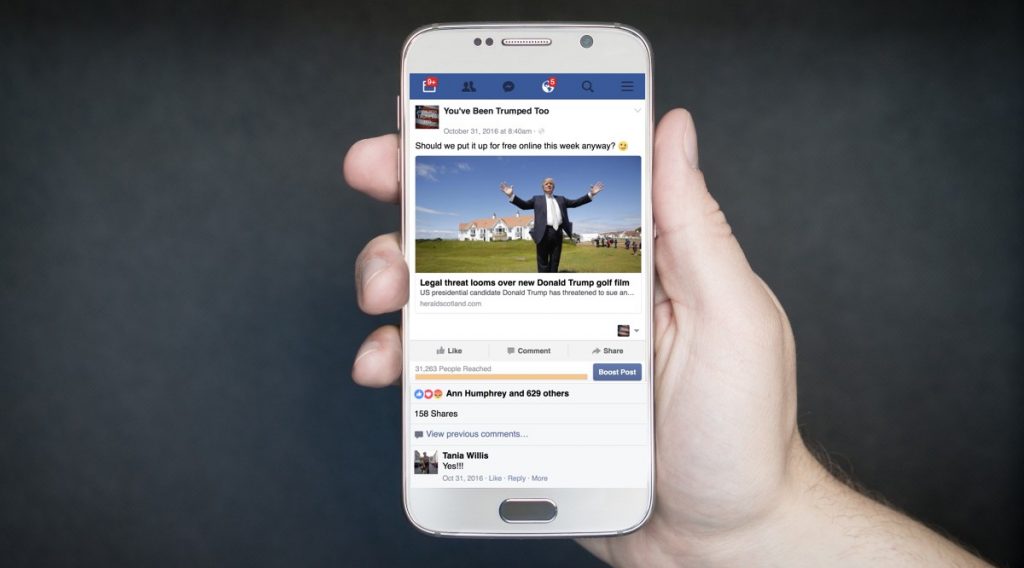The Future of Video Content: Who Will Pay?

Google “movie leaked”. I dare you. The 2,020,000 results that spill down your screen are a testament to the internet’s ability to eat up an ever-higher bandwidth form of entertainment from the hands of skilled producers, directors, videographers, musicians, editors, actors, and the rest of the startled industry that relies upon video consumption to put bread on their table. It’s pretty frightening.
Where is this all headed? This week, Facebook released its Watch platform (see Facebook Launches Watch To Quench Our Undying Thirst For Online Video Content on Forbes) in an effort to spark original video content creation – both live and recorded – on their network. They say people will be drawn to watch more video on Facebook because of the community dimension of the viewing experience: joining groups of other watchers, chatting simultaneously, interacting directly with content creators through Facebook.
And I think they’re spot on.
If this trend continues, even the subscription-based online services like Netflix and Hulu that bring cable and theatrical content to pixel screens will be struggling to compete with networks that provide content for free by wrapping ads around it. For those who think this is fear-mongering, ask any artist what the MP3 did to the music industry. Technology and broadband access is the only limiting factor holding back the MP4 revolution.
The logical end result of this is one of two scenarios: (1) the slow collapse of the video industry as viewers shift to free and cheaper-cost online content and TV/movie viewership declines or (2) a seismic shift in the monetization model of video content towards advertising-based sponsorship to cover production budgets. The first of these will hurt artists badly. The second will hurt artists less but will irreparably harm the (already-precarious) commercial independence of an industry that will have to rely more and more upon the dollars from ever-more targeted ad networks and less and less upon the cultural demands of viewers.
This isn’t just theoretical: it’s already happened with one of my clients. They produced a searing documentary about local resistance to a Scottish golf development led by Donald Trump, and sought to release it right before the 2016 election. After high-level talks with a prominent online video distributor – and a nearly-signed deal – the company got cold feet about releasing the film and my client was left without a distribution partner.
Luckily, we were able to utilize a successful Kickstarter campaign to raise the funds to cover production and self-distribution of the film, and we released the film independently ourselves on Facebook: it was (to our knowledge) the first full-length film live-streamed on Facebook. Anyone in the world with an internet connection could watch it for free for a week, and in the end we reached over three million viewers on Facebook! (That’s like filling 10,000 movie theaters.)
Perhaps this crowdfunded donation model can work for a documentary filmmaker with a large independent following, but is this really how we want to fund video content in the future? For most of the history of the entertainment industry, demand for content was driven by a more-or-less healthy combination of consumer demand and commercial viability. If we give up paying for our content, though, we give up the strength of our demand – or at best we transfer it to online networks like Facebook that can parlay our eyeball time into ad dollars from companies. Social media networks have effectively become the new shopping malls, curating our news and entertainment choices for us by aggregating our eyeballs into news feeds and our private data into ever-better ad targeting algorithms.
If we want high-quality, independent video content in the future, we’re going to have to pay for it – and demand that our social networks allow the full spectrum of it. This is a parallel mission alongside net neutrality: yes, we have to protect access of small guys and big guys alike to get their content onto and through the internet. But we also have to make sure that the content creators who generate that content are paid equitably for their time and talents.
The dream of an internet that democratizes access to content is only possible if the content creators can continue to feed their families.

